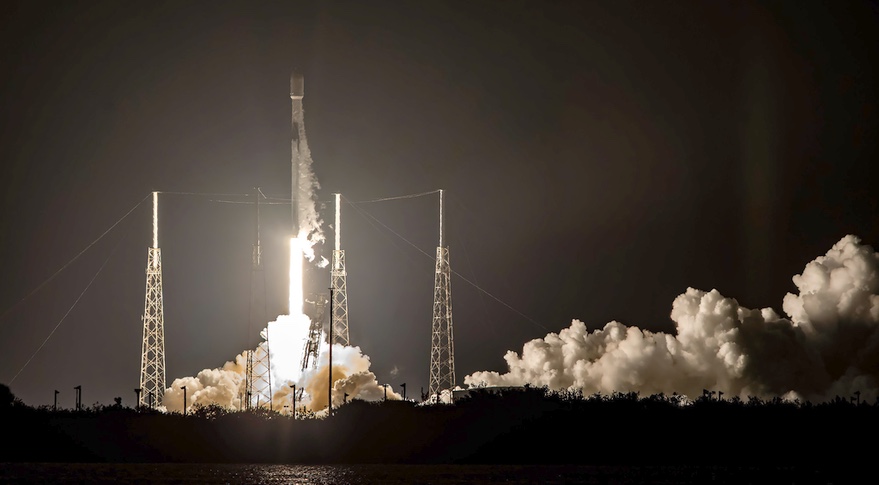WASHINGTON — SpaceX set records for the reuse of its Falcon 9 booster and the mass that rocket placed into orbit March 19 with the latest launch of Starlink satellites.
The Falcon 9 lifted off from Space Launch Complex 40 at Cape Canaveral Space Force Station in Florida at 12:42 a.m. Eastern. The launch took place in the second of two opportunities that night after storms in the area ruled out a launch at 11:24 p.m. Eastern March 18.
The Falcon 9 placed 53 Starlink satellites into an orbit at an altitude of approximately 320 kilometers. SpaceX resumed launches on a northeastern trajectory on this mission after flying several previous Starlink launches on a southeastern trajectory where sea conditions for booster recovery were more favorable during the winter.
In a tweet after the launch, SpaceX Chief Executive Elon Musk said that the launch was the heaviest Falcon 9 payload ever launched, at 16.25 metric tons. That means that the individual Starlink satellites weigh up to 306 kilograms each, depending on whether that includes the tensioning rods used to deploy the satellites and, if so, the mass of those rods. By comparison, the earlier generation of Starlink satellites weighed about 260 kilograms each.
With this mission, SpaceX has launched 2,335 Starlink satellites, according to statistics maintained by Jonathan McDowell. Of those, 2,112 satellites are in orbit, 1,575 of which in operational orbits and nearly 450 more moving toward operational orbits.
SpaceX also set a new milestone in booster reuse with the 12th launch of this booster, designated B1051, which landed on a droneship in the Atlantic Ocean. The booster first launched the Demo-1 commercial crew test flight three years ago and has also launched the Radarsat Constellation Mission, the SXM-7 radio satellite and nine Starlink missions, counting this flight. Two other boosters have flown 11 flights.
Two Crew Dragon missions slip
Hours before the Starlink launch, the 11th Falcon 9 mission of 2022, NASA and Axiom Space announced their upcoming Crew Dragon missions had slipped by a few days.
Axiom Space said March 18 that its Ax-1 mission to the International Space Station, carrying four commercial astronauts, had been delayed from March 30 to April 3. The company said the four-day delay “will allow teams to complete final spacecraft processing ahead of the mission.”
The company added the April 3 date is “pending range availability.” NASA announced at a March 14 briefing that the wet dress rehearsal for the Space Launch System, which rolled to Launch Complex 39B March 17, was scheduled for April 3. NASA officials said earlier this year that LC-39A, which hosts Falcon 9 launches of Crew Dragon, would need to be cleared during SLS launch operations at LC-39B, but that restriction would not necessarily apply to the wet dress rehearsal.
NASA also announced March 18 that the Crew-4 commercial crew mission, which will send four NASA and ESA astronauts to the ISS, had slipped from April 15 to April 19. NASA said the delay will “allow appropriate spacing for operations and post-flight data reviews between human spaceflight missions” and also permit launch attempts on multiple consecutive days based on orbital mechanics. The launch date will be finalized after a review early next week.

